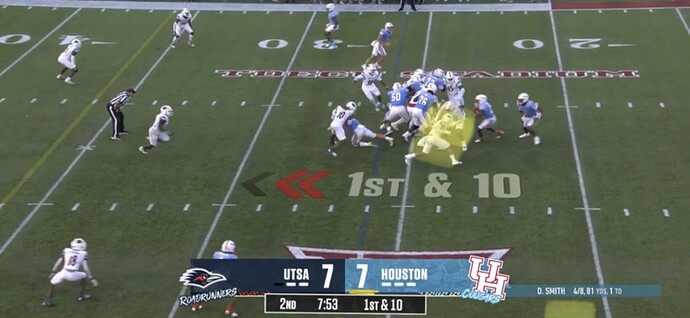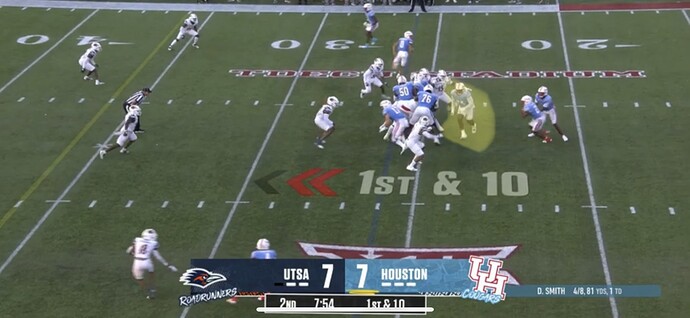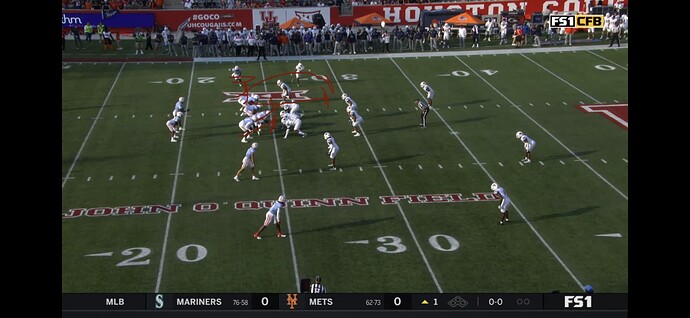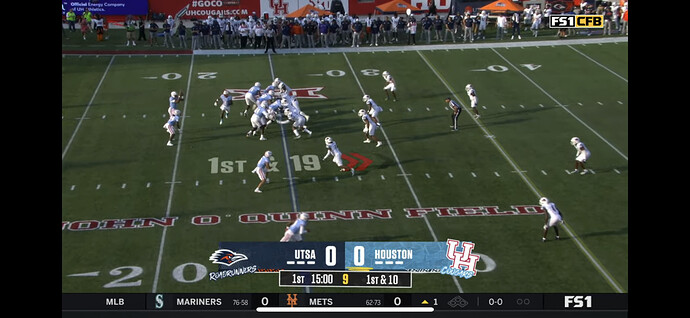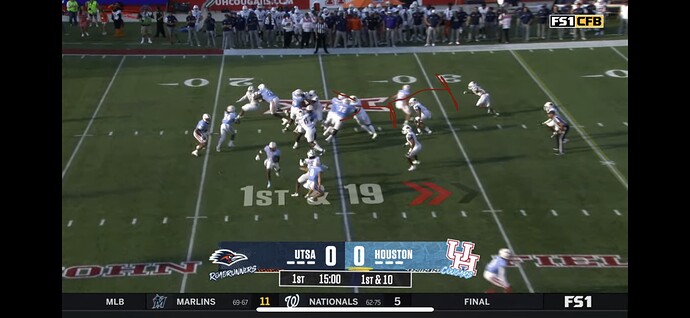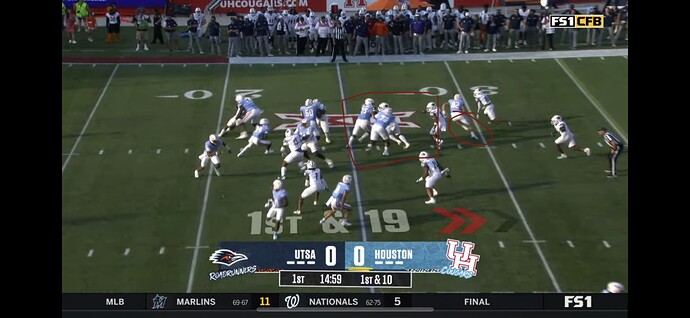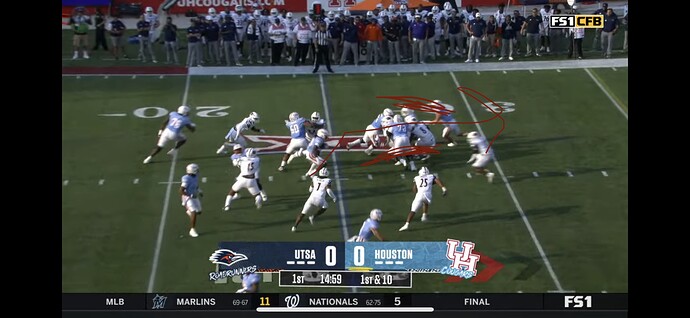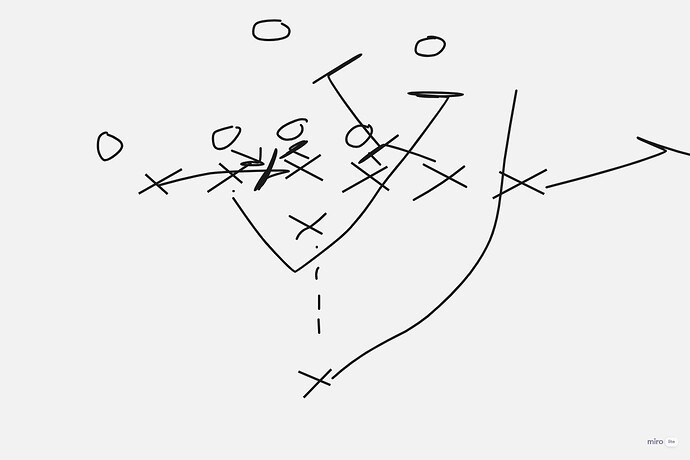You asked about attacking the 4,5,6, and 7 holes.
That refers to the alignment of the Defensive linemen. But I think what you are asking is what kind of runs could we expect targeting the B,C, and D gaps, meaning outside the guard, tackle, or tightend. Am I understanding that correctly?
I would start by saying its quite challenging to run the ball against any kind of 5-2 or something like that, especially when you have as many huge DL as UTSA had. The drawbacks of these looks are if you can get through that mess at the line of scrimmage you are gonna gash them, which is what we talked about on that first play, everyone hits their assignment and that thing might have gone all the way. The other thing you can do is get the ball to your guys in space more. They did it a couple times where they threw just a quick hitch to manjack, or cobbs I think. that keeps those outside LoS defenders from cheating in too much and ideally gets them out of that look all together. The only concern, and I think a reason we didn’t do that more is that wide side edge player was often lining up over our slot wr, and if you call that play and he cheats outside thats a pick 6. So I get what Dana said about just wanting to keep everything conservative and not make any mistakes when your defense is playing so well. But that would be one way to attack it is short on the outside, and then if we can dink our way down the field enough, you get those safeties to walk up more and you take a shot over the top. Im not gonna pretend to be a coverage expert, but I think they were just running a basic cover 2 on the back end. so like that skinny post to Manjack is a nice way to attack the middle, maybe a smash concept with the TE, or some flood concepts to the outside. So candidly my biggest advice would have been to open it up more. Dana admitted as much, but its also tough to get rhythm going with how that game played out. As far as outside zone runs it can be good, but its gonna be a lot of what we called at Katy, Trade, or wham blocks. Which are a form of a trap play more or less. This was a staple of Tulane’s run game last year, and I think we will see a lot of it this year, but its really challenging against a defense like this. The reason being You are asking that backside tackle to fill for the pulling guard and cover up the DT on the backside, which is a huge ask. that play can get blown up really bad. In fact at Katy we called this defense Mad Dog, and had a base call built in a lot of times, so if we saw something like this it didn’t matter what the run call was for the back, we were blocking it like 43 base or a B gap inside zone run. Because its safe. You aren’t gonna get blown up in the back field, and if we can create that crease we talked about you can gash them big.
Ultimately I would say, were there some things UH could have done better as far as some different runs? sure, but Its a defense designed to stop the run, which is honestly a big compliment to what UTSA thinks about Naghavi and our O-line. Because last year we faced mostly 5 or 6 man boxes with teams daring us to run it, and we couldn’t.
You obviously still need to establish the run to not become one dimensional, but the more I watch the game back, the better I feel. UH had 101 rushing yards. Donovan had 31 so our backs had 70, which isn’t great, but its not bad. UTSAs game plan was they thought they’d be able to put up a lot of points, and if they could get on top of us early, they wanted to make us abandon the run and force Donovan to beat them.
I think UH called a good game, just need some better execution, which I remain confident that we can do it was the first game of the year with a lot of new things going on. And I promise you all, Dana, Naghavi, and Burchett know how to run and call a great game. My understanding of what they are doing is probably only 20% of all the complexities that are specific to their system and scheme and scouting reports.
